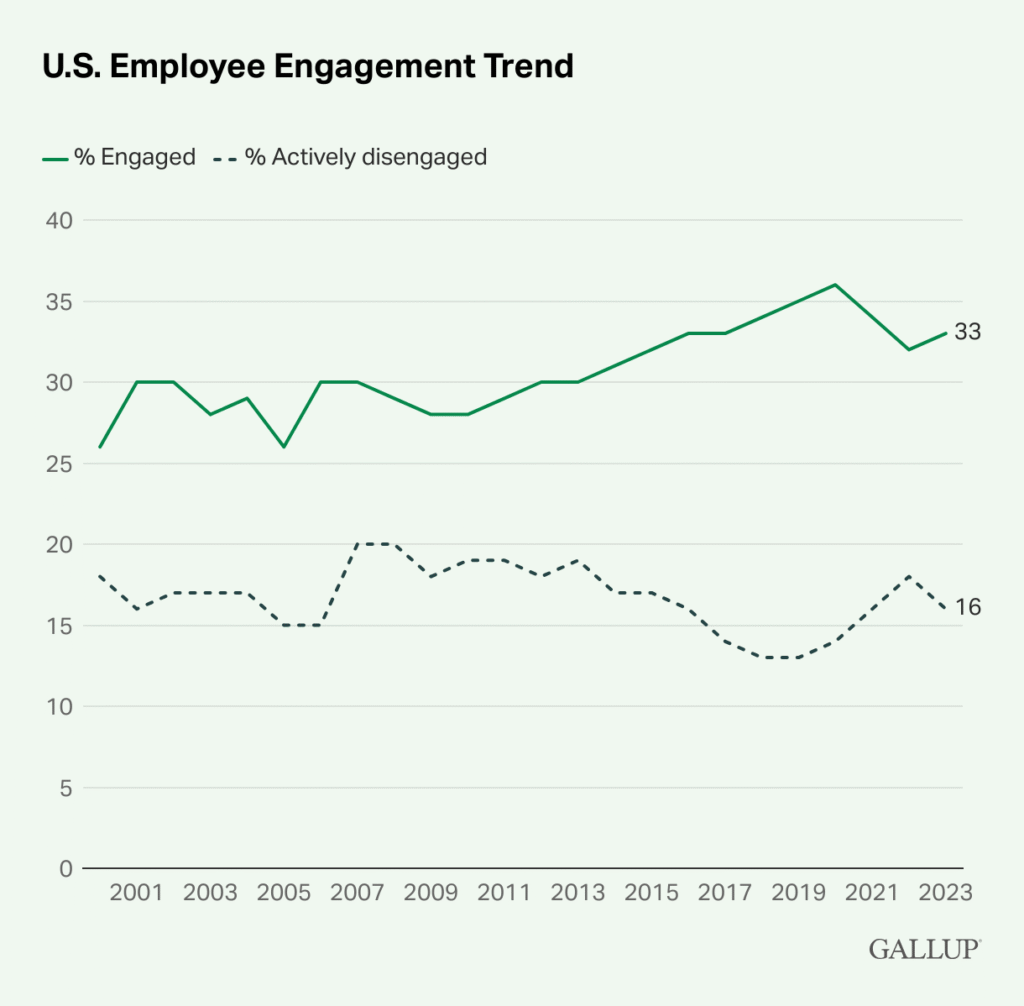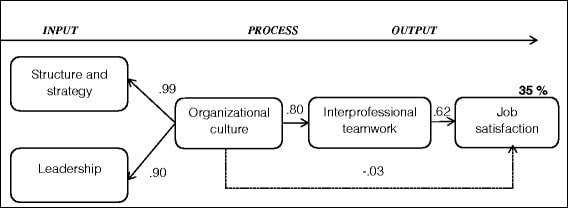Leadership and team building are at the heart of what you do – you’ve recruited talented professionals, onboarded them with care, and brought them together in the same room or Slack channel. Yet despite doing everything right on paper, something still feels off. Deadlines slip, meetings lack energy, and that spark you hoped for just isn’t there, leaving team members struggling to identify underlying issues.
This isn’t unusual. According to Gallup, only 33% of U.S. employees were engaged in their work in 2023, emphasizing the need for strategies to enhance employee engagement. , while 16% were actively disengaged. This disengagement is estimated to cost companies approximately $1.9 trillion annually in lost productivity, underscoring the importance of the organization’s success and team members effectiveness. Despite common responses like pizza parties or trust falls, without intentional leadership and strategically chosen team-building efforts, these surface-level fixes often fail.

The truth is that high-performing teams don’t emerge by chance. They are built through deliberate effort, grounded in research-backed principles that cultivate team members trust, accountability, and aligned purpose, just like the best leaders do.
The Leadership-Team Building Connection: Why One Without the Other Fails
Leadership & team building are often discussed separately, but they’re interdependent. Strong leadership without team cohesion leads to fragmented execution. Bonding without effective leadership results in aimless energy and wasted resources, affecting the performance of the entire team . When combined with purpose, clarity, and team effort, a cohesive team can achieve exponential results.
Research from Google’s Project Aristotle found that the most successful teams weren’t those with the most experienced individuals or the highest IQs. Instead, they were those that created an environment of psychological safety, had clear goals, and operated with structure and dependability. These five key dynamics—psychological safety, dependability, structure and clarity, meaning, and impact—were identified as critical to team effectiveness.
These findings show that investing in team building exercises isn’t about creating downtime—it’s about increasing performance by creating conditions where team members work together and thrive by fostering emotional intelligence, leading to innovative solutions . , ultimately contributing to the team’s success.
Establishing Psychological Safety: The First Step Toward Performance
Psychological safety is the belief that one can speak up, make mistakes, and express ideas without fear of embarrassment or retaliation, so that all activity participants and team members understand the importance of openness. Harvard researcher Amy Edmondson’s work shows that it’s the single most important factor behind successful teams.
When employees don’t feel safe, they withhold feedback, avoid taking risks, and contribute less creatively. Conversely, when safety is high, team collaboration and experimentation flourish, making it a leader’s job to cultivate that environment to improve communication among team members and ultimately enhance team performance .
Activities That Build Psychological Safety:
1. Vulnerability Loops
Pair team members for weekly 1:1s where they answer prompts like: “What’s one work challenge you’re struggling with?” or “When was a time you felt overlooked at work?” This fosters empathy and emotional insight, while also promoting active listening and conflict resolution .
2. Red-Yellow-Green Check-Ins
Start meetings by having team members rate their current emotional state as red (stressed), yellow (neutral), or green (energized). This builds awareness and sets context for communication.
3. Blameless Post-Mortems
After a project or missed goal, hold a debrief focused on problem solving and “what we can learn” rather than “who made the mistake.” Focus on processes, not personalities, to enhance problem-solving skills .
Studies indicate that organizational culture and teamwork significantly influence job satisfaction. Specifically, a study published in the Journal of Nursing Management found that 35% of job satisfaction is predicted by a structural equation model that includes both organizational culture and teamwork, which ultimately enhances the team’s capabilities and allows us to measure success.

Real-World Activities That Translate to Stronger Teams
Beyond emotional safety, teams need shared experiences that mirror the complexity of their real-world work. Below are leadership and team-building activities designed with intention to build teamwork and backed by behavioral science. to create a single team atmosphere that can influence interactions with other teams.
Strategy Simulation Workshops
Create simulations around scenarios like a PR crisis, market expansion, or a failed product launch. Teams must collaborate, make decisions under pressure, and present solutions within limited time frames, reflecting various leadership style .
These simulations help identify natural leaders, surface communication gaps, and enhance systems thinking, which helps in understanding group dynamics . A 2023 McKinsey report highlighted a 32% improvement in decision-making accuracy among leaders trained through simulations.
Marshmallow Tower Challenge (with Reflection)
In this classic activity, teams build the tallest freestanding structure using dry spaghetti, tape, and a single marshmallow. It seems simple, but the exercise quickly reveals patterns in planning, delegation, and execution.
Crucially, the activity’s value lies not in the build but in the reflection that will encourage team members to learn from their experiences . Teams should discuss how this activity relates to their work life :
What role did each person play?
How did we adapt to failure?
What assumptions slowed us down?
This reinforces team values, learning agility, and adaptability—key predictors of team resilience, helping ensure the whole team is moving in the same direction.
Spectrum Mapping for Diversity of Thought
This activity asks team members to physically (or virtually) position themselves on a spectrum in response to a prompt like: “How do you feel about remote work?” or “How comfortable are you with ambiguity?”
Unlike binary polls, this activity surfaces the nuance in your team’s thinking. It’s particularly effective for analyzing body language:
Encouraging silent thinkers to share.
Identifying hidden tensions.
Reframing conflict as constructive difference.
It fosters mutual respect and can be used before major strategic changes to gauge internal alignment.
Adapting to Your Organizational Context
Not every company will benefit equally from the same activities. A startup navigating rapid growth will have different team dynamics than a legacy enterprise undergoing transformation. That’s why context matters when collaborating with other groups, it’s essential that everyone is on the same page .
Examples of Strategic Alignment:
A software firm struggling with remote work friction ran a month-long challenge where each team designed a hybrid meeting format. The most effective format became company policy.
A retail organization recovering from layoffs used “story circles” to process change, where teams shared one story of personal growth amid disruption.
A logistics company deploying AI tools ran cross-department hackathons to brainstorm use cases—building innovation and team engagement simultaneously.
The key is to ask: What’s the behavior or mindset we want more of? Then design activities that reward or rehearse those outcomes.
Measuring What Matters: Proving the ROI of Team Building
Many leaders hesitate to invest in leadership development and team-building exercises because their impact can feel intangible. But cultural and interpersonal factors can—and should—be measured in leadership & team building.
Metrics to Track:
Psychological Safety Pulse Surveys
Short, recurring surveys asking: “Do you feel safe speaking your mind in this team?” or “Do you feel supported by your manager?”Participation Equity
Track how often each member speaks in meetings or contributes in workshops. Use this to adjust facilitation strategies.Project Health Retrospectives
After each major initiative, score factors like trust, clarity, alignment, and ownership. Over time, patterns will emerge that correlate with successful outcomes.
Investing in organizational health can lead to significant performance improvements. McKinsey’s research shows that companies in the top quartile of organizational health deliver three times the returns to shareholders compared to those in the bottom quartile, reflecting the personal values of the organization.
Common Mistakes That Undermine Efforts
Even well-intentioned leaders can sabotage their team-building goals by falling into one of these traps:
Superficial Activities Without Reflection
Doing a “fun day” without tying it to a work-relevant theme (like collaboration, innovation, or feedback) wastes potential. Always close the loop with structured debriefs.
Ignoring Power Dynamics
When the same people speak up—or lead activities—less vocal team members disengage. Rotate facilitators, invite anonymous feedback, and spotlight quieter contributors in small groups to measure and achieve success in engagement.
Inconsistency
Team-building can’t be quarterly. Teams grow stronger through small, repeated touchpoints: daily check-ins, weekly learning moments, and monthly challenges. Embed growth into rhythm, not as an afterthought.
Conclusion
The most high-functioning teams aren’t the ones that avoid failure—they’re the ones that recover faster, learn continuously, and grow together. And that growth doesn’t happen by accident.
It takes great leaders who are willing to listen first, build trust deliberately, and align every exercise with the bigger picture. It means choosing activities not for entertainment value but for the human behaviors they unlock, especially when a game requires participants to actively engage and collaborate . It means measuring the invisible things—like safety, ownership, and belief—just as seriously as KPIs and quarterly targets.
Done well, leadership and team work are not separate endeavors. They are two sides of the same coin—and that coin is the culture your people experience every day, which can significantly improve collaboration.
Frequently Asked Questions (FAQs)
1. What are the most effective team building activities for hybrid teams?
For hybrid teams, activities that foster emotional visibility and shared decision-making work best, promoting creative collaboration . Try virtual spectrum mapping, red-yellow-green check-ins, or strategy simulations that require digital collaboration.
2. How do I measure the ROI of leadership & team-building activities?
Track cultural and interpersonal metrics such as psychological safety pulse surveys, participation equity in meetings, and project health retrospectives. Over time, patterns emerge that correlate with high-performing teams.
3. What is psychological safety and why is it important in team building?
Psychological safety is the belief that group members can speak up and take risks without fear of embarrassment or punishment. It’s the foundation for open communication, innovation, and resilience—key to effective team performance.
4. Are trust falls and trivia nights still useful?
Only if tied to a bigger purpose. Activities like trust falls or trivia can help with bonding, but without reflection or a learning goal, they risk becoming superficial. Always connect them to workplace behaviors and debrief as a group.
5. What role does leadership play in team building?
Leadership sets the tone for psychological safety, accountability, and trust. Without intentional leadership, even the best team-building activity will fall flat. Team leaders must model vulnerability, consistency, and clarity of purpose in alignment with the team’s goals .
6. Can small teams benefit from these exercises too?
Absolutely. In fact, smaller teams often see quicker results from consistent team-building practices because feedback loops are shorter and trust builds faster. Adapt activities to scale without skipping reflection to encourage creativity.
7. How often should we run team-building activities?
Think rhythm, not events. Instead of quarterly offsites, build weekly or bi-weekly micro-practices into your team’s routine—like check-ins, feedback loops, or reflection rituals.
8. What’s the difference between team bonding and team building?
Team bonding is about connection. Team building goes further—it develops collaboration skills, decision-making patterns, and trust structures that impact day-to-day performance.

A trailblazer in humanising leadership and building high-resilience teams. As a former United Nations Peacekeeper, he leverages his high-stakes experience to redefine leadership dynamics. With a career distinguished by numerous accolades, Joseph now helps organizations thrive through a human-centric approach, enhancing performance, productivity, and workplace culture.







